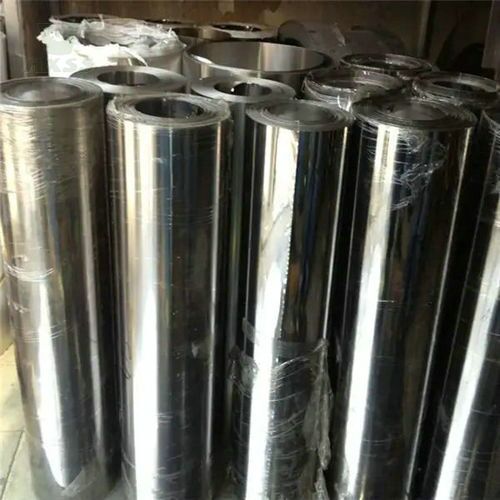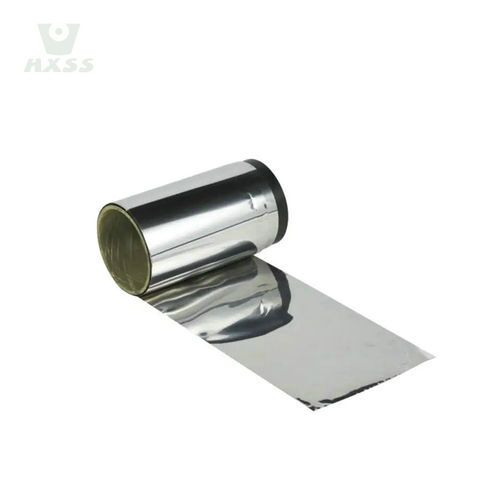Do you expect to have a plan or an idea to purchase China 321 stainless steel foil roll products for the manufacture of high-tech systems such as the aerospace industry, instrumentation industry, chemical machinery industry, military scientific research units, electronic and electrical industries, and medical ships? Contact us for the China 321 stainless steel foil price!
321 Stainless Steel Foils
China 321 Stainless Steel Foil Manufacturers | Suppliers | Exporters
Range of Precision 321 Stainless Steel Foils
| Product Name | Stainless Steel Foils |
|---|---|
| Thickness: | 0.015-0.3mm, etc. |
| Length: | Customizable |
| Width: | Customizable |
| Standard: | ASTM, AISI,JIS, GB, EN |
| Surface: | BA,2B, NO.4, HL,8K, etc. |
| Certification: | ISO, SGS, BV, etc. |
| Technique: | Cold Rolled |
| Grade: | 321 |
| Product Name | Stainless Steel Foils | Standard: | ASTM, AISI,JIS, GB, EN |
|---|---|---|---|
| Thickness: | 0.015-0.3mm, etc. | Surface: | BA,2B, NO.4, HL,8K, etc. |
| Length: | customizable | Certification: | ISO, SGS, BV, etc. |
| Width: | customizable | Technique: | Cold Rolled |
Stainless Steel Foil
Contact Us For The China 321 Stainless Steel Foil Price!
TISCO can provide the world’s ultra-thin stainless steel foil with a thickness of 0.015mm. At present, Taiyuan Iron and Steel is continuing the experiment. I believe that in the near future, the TISCO Plant in our country can produce 0.01mm stainless steel foil.
What Is 321 Stainless Steel Foil?
AISI 321 stainless steel foil is a thin sheet of stainless steel alloy that is primarily composed of iron, chromium, nickel, and titanium. The “321” designation refers to the specific alloy composition, with the main difference from standard 304 stainless steel being the addition of titanium. This titanium addition provides improved resistance to sensitization and intergranular corrosion, making 321 stainless steel suitable for elevated temperature applications.
Key properties of AISI 321 stainless steel foil include:
- Corrosion Resistance: The titanium content in 321 stainless steel helps prevent sensitization, which is a process that can lead to intergranular corrosion in certain environments. This makes 321 stainless steel suitable for use in high-temperature and corrosive environments, such as in the aerospace, chemical, and petrochemical industries.
- High-Temperature Stability: 321 stainless steel has good high-temperature strength and can withstand temperatures up to around 900°C (1650°F) without significant loss of mechanical properties. This makes it suitable for applications involving exposure to heat and thermal cycling.
- Weldability: AISI 321 stainless steel offers good weldability, similar to that of other austenitic stainless steel grades. It can be welded using common welding techniques, but post-weld annealing might be required to maintain corrosion resistance in the heat-affected zone.
- Aesthetic Appearance: Like other stainless steel alloys, 321 stainless steel foil has a shiny and attractive appearance, making it suitable for various decorative and architectural applications.
- Applications: Due to its resistance to high temperatures and corrosion, 321 stainless steel foil is commonly used in applications such as aircraft exhaust systems, jet engine parts, furnace components, heat exchangers, chemical processing equipment, and automotive applications.
It’s important to note that while 321 stainless steel offers improved high-temperature performance compared to standard 304 stainless steel, it’s not immune to all forms of corrosion. The appropriate alloy selection for a given application depends on the specific environmental conditions and requirements.
Contact Us For The China 321 Stainless Steel Foil Price!
Application of China 321 Stainless Steel Foil
321 stainless steel foil, like other forms of 321 stainless steel, is used in various applications where its unique properties are advantageous. Some common applications of China 321 stainless steel foil include:
- Aerospace Industry: 321 stainless steel foil is used in aircraft components, such as exhaust systems and engine parts, due to its high-temperature resistance and corrosion resistance in the presence of jet fuel and other chemicals.
- Heat Exchangers: The foil is employed in heat exchangers for its ability to withstand high temperatures and corrosive environments in applications involving the transfer of heat between fluids.
- Chemical Processing Equipment: 321 stainless steel foil is suitable for equipment used in chemical processing, where resistance to corrosion from acids, bases, and other aggressive chemicals is crucial.
- Automotive Industry: It’s used in components like exhaust systems, mufflers, and catalytic converters due to its resistance to elevated temperatures and corrosion from road salts and other environmental factors.
- Furnace Components: In applications that involve high-temperature furnaces and equipment, 321 stainless steel foil can be used due to its ability to maintain strength and resist oxidation.
- Food Processing: Some food processing equipment requires materials that can withstand high temperatures, exposure to food products, and cleaning agents. 321 stainless steel foil might be used in such equipment.
- Architectural Applications: Due to its aesthetic appeal and resistance to corrosion, 321 stainless steel foil might be used for decorative purposes in architectural elements.
- Petrochemical Industry: The foil can be used in various equipment and components within the petrochemical industry, where resistance to high temperatures and corrosive chemicals is essential.
- Power Generation: In power plants and energy facilities, 321 stainless steel foil might find applications in parts exposed to high temperatures, steam, and corrosive gases.
- Medical Equipment: In some medical instruments and devices, where corrosion resistance is important, 321 stainless steel foil could be used.
It’s important to note that the suitability of 321 stainless steel foil for a specific application depends on various factors, including the operating conditions, environment, and required mechanical properties. Proper material selection and potential testing or evaluation should be conducted to ensure that the chosen stainless steel foil meets the specific needs of the application.
Contact Us For The China 321 Stainless Steel Foil Price!
How To Make 321 Stainless Steel Foils?
The process of making 321 stainless steel foils involves several steps within the stainless steel manufacturing industry. While I can provide a general overview, please note that the specific details can vary based on the manufacturer’s processes and equipment. Here’s a general outline of how 321 stainless steel foils are typically produced:
- Raw Materials Preparation:
- The process begins with the selection and preparation of raw materials, including iron, chromium, nickel, titanium, and other alloying elements in the required proportions.
- Melting and Alloying:
- The raw materials are melted in an electric arc furnace or another type of melting furnace.
- Alloying elements like chromium, nickel, and titanium are added to achieve the desired composition for 321 stainless steel.
- The molten metal is carefully analyzed to ensure it meets the desired specifications.
- Casting:
- Once the desired composition is achieved, the molten metal is poured into molds to create semi-finished products like billets or slabs.
- Hot Rolling:
- The semi-finished products are then hot rolled to reduce their thickness while increasing their length and width.
- This process involves passing the material through a series of rolling mills that gradually reduce its thickness to the desired level.
- Annealing:
- The hot-rolled material is subjected to an annealing process to relieve internal stresses and improve its ductility.
- Annealing also helps to refine the grain structure and enhance the material’s mechanical properties.
- Cold Rolling:
- The annealed material is then cold rolled to further reduce its thickness and improve its surface finish.
- Cold rolling involves passing the material through a series of rolling mills at room temperature.
- Final Annealing and Heat Treatment:
- After cold rolling, the material is typically subjected to a final annealing process to achieve the desired mechanical properties and to ensure the material remains corrosion-resistant.
- Slitting and Cutting:
- The material is then slit and cut into narrower strips or sheets, creating stainless steel foils of various dimensions.
- Quality Control and Inspection:
- Throughout the manufacturing process, the material is carefully monitored and inspected to ensure it meets quality standards and specifications.
- Packaging and Distribution:
- The final stainless steel foils are packaged and prepared for distribution to customers for various applications.
It’s important to note that stainless steel manufacturing involves advanced metallurgical processes, specialized equipment, and precise control over factors such as temperature, pressure, and chemical composition. Each step contributes to producing stainless steel foils with the desired mechanical and corrosion-resistant properties.
Contact Us For The China 321 Stainless Steel Foil Price!
Package of China 321 Stainless Steel Foil Rolls
We usually use conventional export packaging standards and then put about 10 packs of desiccant in the container.
If customers have other packaging requirements, we can also adjust the packaging according to customer requirements.



